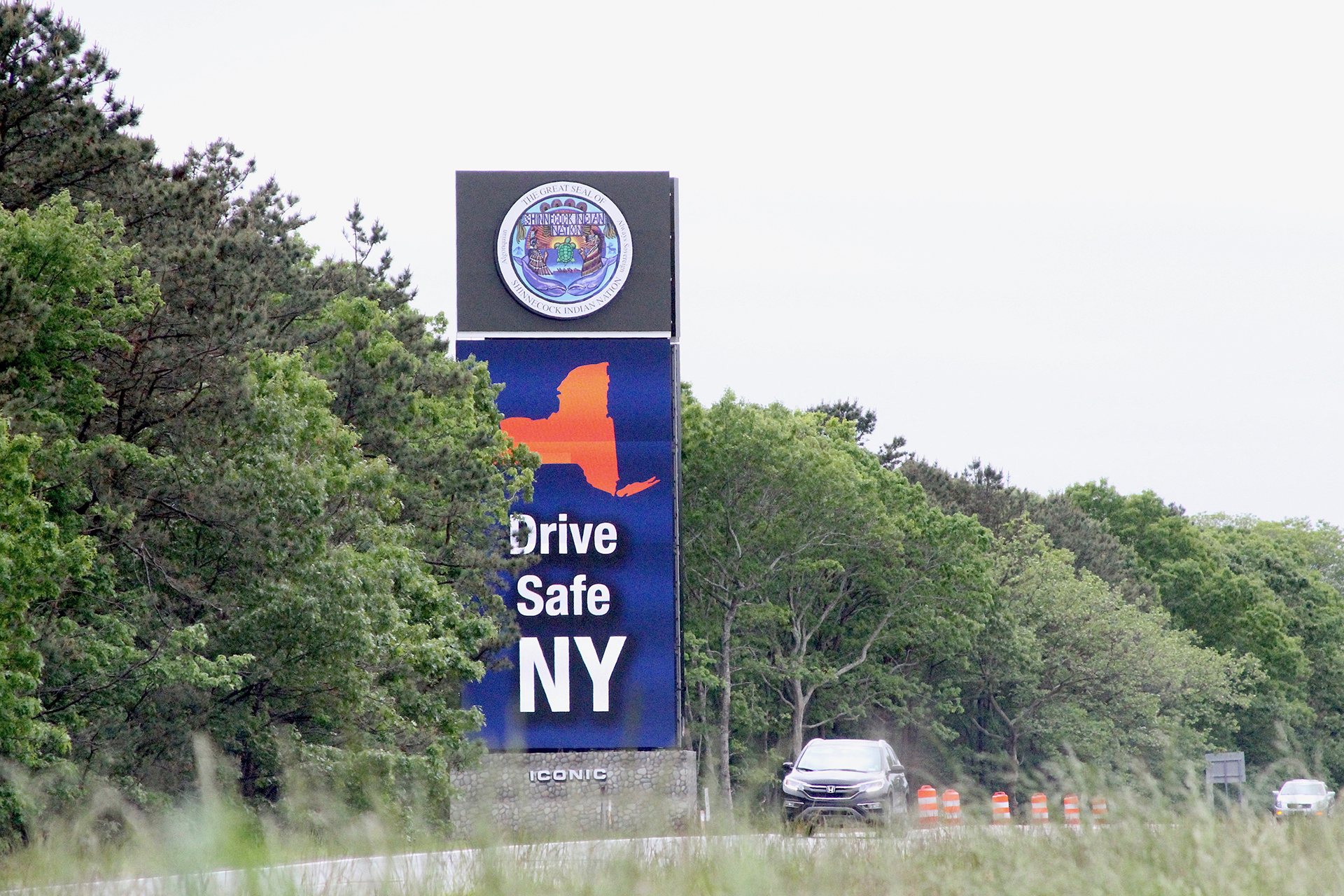National Support For Shinnecock Billboards

The Shinnecock Indian Nation may be in court to argue its right to construct two 61-foot-tall revenue-generating electronic billboards along Sunrise Highway, but it’s received a big boost of confidence in that right with support from the National Congress of American Indians.
During its mid-year meeting, the NCAI unanimously approved a resolution sponsored by the Shinnecock Indian Nation’s Vice Chairman of the Council of Trustees, Lance Gumbs, that backs the Nation’s project and others like it.
The “Shinnecock Indian Nation is a federally recognized tribe with full jurisdiction over its land,” the resolution states. “Litigation now pending against the Shinnecock Indian Nation could set dangerous precedent interfering with jurisdiction and tribal governance in other tribal territories.”
The Nation entered into a contract with the billboard company Iconic Digital Displays, LLC, to erect two double-sided billboards and share the revenue to economically advance the Shinnecock people. Since work began, there have been several cease work orders and temporary restraining orders issued against the tribe and the contractors hired to perform the work. The state has taken the matter to Supreme Court. Tribal leaders requested a motion to dismiss the case, citing sovereign immunity from suit, and Justice Sanford Neil Berland has yet to rule on the matter.
“The state and the plaintiff’s state agency have a responsibility by law and to the people of this state to ensure that no person or entity, including a Native American tribe or their co-owner commercial advertising company, can illegally build structures on a state highway that pose significant hazards to the public at large both during and after construction,” read the restraining order request set forth from paperwork filed by state Attorney General Letitia James and the commissioner of the State Department of Transportation. It also stated that if the signs were to fall they “could crush vehicles traversing on Sunrise Highway, as well as completely block the flow of traffic.”
But the NCAI cited cases in its resolution it believes affirm the Shinnecock Indian Nation’s rights to the project.
“The State of New York has filed suit against the Shinnecock Indian Nation alleging various state regulatory authority, including that conferred by the federal government under the Highway Beautification Act, which requires states to enforce prohibition of roadside advertising on a certain class of roads,” the resolution says, adding the Interior Board of Indian Appeals has previously determined states do not have authority to enforce the Highway Beautification Act on Indian Lands, citing the 1979 case Morongo Band of Mission Indians v. California Area Director, a determination upheld by the California Supreme Court in the 1985 case Dept. of Transportation v. Naegele.
“The Shinnecock Indian Nation, in reliance on its jurisdiction over its restricted fee lands, has entered into an economic development project, on land it has held from time immemorial, to construct and operate two digital billboards on either side of a state highway that runs through the Nation’s lands pursuant to an easement that gives the State of New York no rights beyond road maintenance,” it continued.
The Nation has said in several statements that its tribal council is looking to provide its people with a better way of life, and “have the opportunity to generate revenue and have access to the same standard of living as our much wealthier neighbors.”
“The state’s lawsuit against Shinnecock officials is a thinly-veiled attack on the Shinnecock Nation and our right of self-determination,” the Shinnecock Nation stated. “Throughout our history, our lands and economic future have been taken from us by the state and the surrounding community. With the strength of our ancestors and the blessings of the creator, we will fight this injustice.”
The Shinnecock Indian Nation has repeatedly stated Southampton Town, the NYSDOT, and others have attempted to illegally impose state and town law on sovereign territory, meaning the land is protected or exempt from regulations. The NCAI also sided with this assertion.
“States have claimed rights of way across tribal lands across the country. States frequently overreach the limited rights they may have acquired on Indian lands through rights of way,” the resolution states. “The action against the Shinnecock Indian Nation is but one example of a state attempting to exercise regulatory authority over tribal lands as a tool to intrude on tribal sovereignty.”
The NCAI ended its resolution asserting it condemns state regulatory efforts to limit tribal rights to undertake economic development on tribal land, and supports the efforts of all tribal nations doing so. The group also called upon the Bureau of Indian Affairs of the United States Department of the Interior, as a federal trustee for tribal nations, to support tribes on a nation-wide basis.
desiree@indyeastend.com



